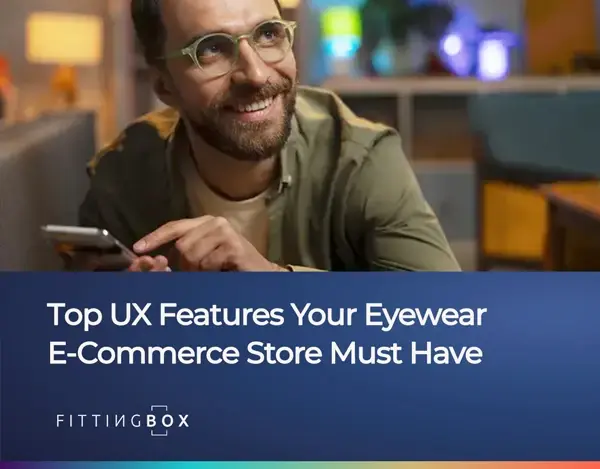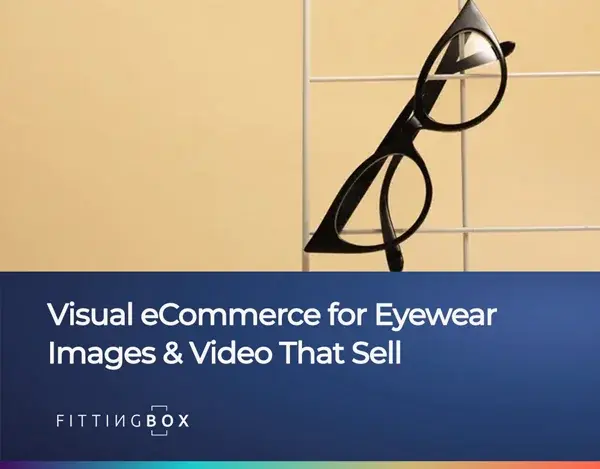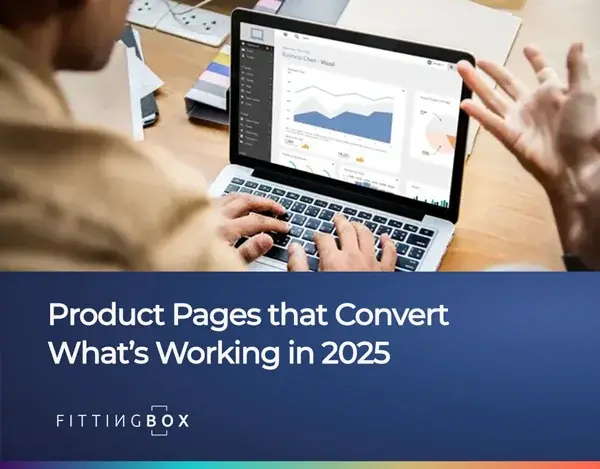
Top UX Features Your Eyewear E-Commerce Store Must Have
In online eyewear retail, competition is fierce and user expectations are rising fast. A sleek design is no longer enough, your website’s user experience must be tailored to help customers browse, compare, and confidently choose their next pair of glasses.
From navigation to virtual try-on, every element impacts engagement and conversions. Understanding which ecommerce UX features truly matter for eyewear is essential to building a site that not only attracts visitors but turns them into loyal buyers.
🔑 Key Takeaways
-
Optimized UX in eyewear ecommerce boosts conversions by reducing cart abandonment rates by up to 70%.
-
Seamless virtual try-on tools significantly enhance customer confidence, increasing engagement by as much as 250%.
-
Detailed visualization with 3D and AR improves product interaction, resulting in a 94% higher conversion rate.
-
Integrating tools like PD measurement and face shape detection empowers informed decisions, increasing customer satisfaction by 30%.

Why UX Matters in Eyewear E-Commerce
User experience is more than a design choice, it's a conversion lever. In the eyewear industry, where visual appeal and product confidence are paramount, delivering a seamless online journey directly impacts sales. Research from Baymard Institute (2024) indicates that nearly 70% of online shoppers abandon their cart due to poor user experience, a trend that is especially damaging for high-consideration purchases like glasses.
Customers shopping for eyewear online want reassurance: clear visuals, easy comparisons, and the confidence that the frames will suit their face and prescription. Unlike fashion or electronics, eyewear blends medical necessity with personal style, making the purchase process more complex. That’s why every friction point whether it’s a clunky product page or lack of try-on tools, can translate to lost revenue.
Optimizing your ecommerce UX means reducing uncertainty and making exploration enjoyable. From filtering by face shape to trying on frames virtually, a thoughtful UX anticipates customer needs. Brands that excel here see significant results: websites with optimized UX convert up to 400% better than those with outdated interfaces (Forrester, 2023).
1. Fast and Frictionless Navigation
The foundation of any successful eyewear e-commerce experience is simple: users must be able to find what they’re looking for in seconds. Whether they're after round titanium frames or blue-light blocking lenses, intuitive navigation guides their path. A study by Nielsen Norman Group (2024) revealed that users are 50% more likely to engage with a site that offers clear filtering and sorting options.
Your store’s menu structure should reflect the way customers think. Instead of sorting only by gender or collection, consider integrating filters for face shape, frame material, lens type, and style. These refinements not only make navigation more efficient but also support more personalized browsing.
Mobile Optimization is Non-Negotiable
Over 68% of eyewear e-commerce traffic in 2024 came from mobile devices (Statista), and these users expect lightning-fast performance. Prioritize mobile-first design with thumb-friendly buttons, collapsible menus, and lightning-fast load times. Also, use sticky headers and persistent filters to allow easy product comparison, especially when shoppers switch between categories or revisit a frame.
- Enable real-time search suggestions
- Use auto-categorization for faster discovery
- Integrate breadcrumb navigation to help backtrack easily
2. Detailed Product Visualization
In eyewear e-commerce, seeing is believing. High-quality visuals reduce hesitation and boost confidence, especially when customers can’t physically try on frames. Your product pages should go beyond static images, they should offer dynamic, interactive views that bring frames to life.
At minimum, provide HD photos from multiple angles, including front, side, and angled views. But to truly engage users, consider adopting 360-degree viewers or 3D modeling. These features allow customers to inspect details like frame thickness, hinge quality, and lens curvature. According to Shopify (2024), products with 3D or AR visuals see up to 94% higher conversion rates compared to static imagery.
Maximizing Confidence with Technology
Advanced tools like a 3D Viewer enable users to rotate and zoom on frames, offering a near-tactile experience. Frame Removal technology also plays a vital role by allowing a realistic preview of how glasses will look on the user’s face, without their current eyewear interfering. This builds trust and mimics the physical in-store experience, a key step toward final purchase.
- Use consistent lighting and neutral backgrounds in all visuals
- Label key features directly on the product images (e.g., nose pads, temple material)
- Offer a quick-zoom or magnification tool for details
3. Seamless Virtual Try-On Integration
One of the most transformative ecommerce UX features in the eyewear industry is the ability to try on frames virtually. Not only does it replicate a key in-store experience, but it also shortens the decision-making process. However, the effectiveness of a virtual try-on depends largely on its integration and usability.
The best experiences are immediate, intuitive, and distraction-free. Customers should be able to launch the tool directly from the product page, without pop-ups or page reloads. The interface must be fast, accurate, and compatible across devices. According to Fittingbox data (2025), online stores with virtual try-on see engagement increase by up to 250%, and return rates drop due to better product expectations.
UX Tips for Better Try-On Adoption
To boost usage and conversions, highlight the try-on option with clear visual cues like “Try it on now” buttons or camera icons. Consider offering a tutorial or sample video to show how the tool works, and make sure it functions smoothly on both iOS and Android.
- Embed virtual try-on directly in product galleries
- Ensure face alignment is automatic and fast
- Include callouts like “See how it fits your face” to encourage clicks
Virtual fitting isn’t a gimmick, it’s a trust-building tool that allows users to visualize how the frame complements their facial features. When it feels natural and fast, it becomes one of the most powerful assets for any optical e-commerce site.

4. Tools That Empower Decision-Making
Buying glasses online is a big decision, customers need more than visuals. They seek tools that validate their choices and remove uncertainties. That’s where decision-support features like pupillary distance measurement, lens simulation, and face shape detection come in. These tools don’t just enhance UX; they serve as digital advisors.
For instance, a pupillary distance (PD) measurement tool allows users to obtain a precise measure of pupillary distance at home, avoiding the need for in-store visits. Similarly, a lens simulator helps shoppers visualize how different lenses, blue light, progressive, photochromic, will affect their vision and aesthetics.
Guided Confidence Leads to Higher Conversions
Face shape detection APIs guide users toward frames best suited to their facial features, reducing return rates and boosting satisfaction. When these tools are visually integrated and easy to use, customers are more likely to complete their purchase. According to eMarketer (2024), online eyewear retailers using personalization tools see a 30% boost in customer satisfaction.
- Offer a real-time PD measurement tool using the webcam
- Let users switch lens options and preview visual effects instantly
- Recommend frames based on detected face shape with clear explanations
These features transform a basic product page into an interactive consultation. When implemented thoughtfully, they replicate the in-store expertise and enhance decision-making, especially for first-time buyers.
Conclusion
Building a successful eyewear e-commerce store isn’t just about showcasing beautiful frames, it’s about crafting a digital journey that guides, reassures, and converts. From fast navigation and immersive visuals to virtual try-on and intelligent decision-making tools, each UX feature plays a strategic role.
Prioritizing these elements helps reduce friction, increase engagement, and drive more confident purchases. By aligning your user experience with customer expectations, your store can stand out in a competitive market and deliver a shopping experience worthy of in-store expertise.
LET'S TALK
Request a demo, a quote or set up an appointment with one of our sales representatives.
CONTACT USUseful Links
Corporate
© FITTINGBOX 2025 • Terms of use • Privacy & Legal



